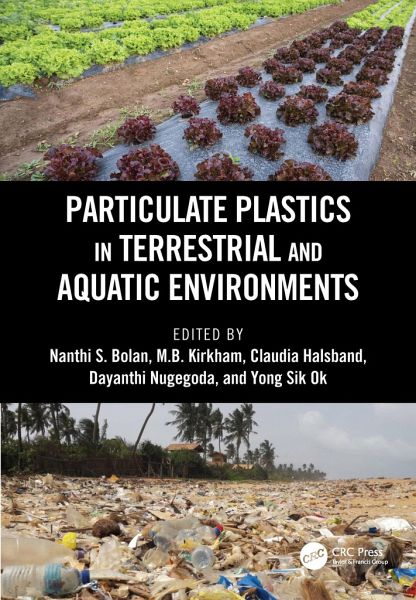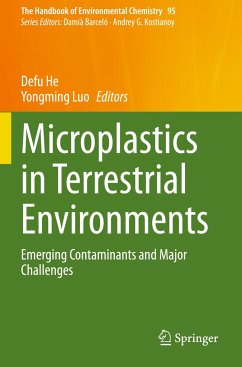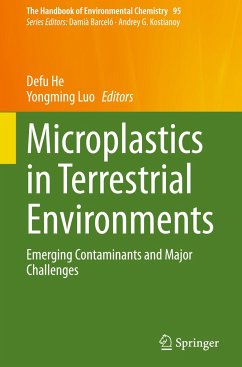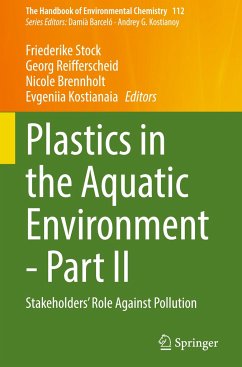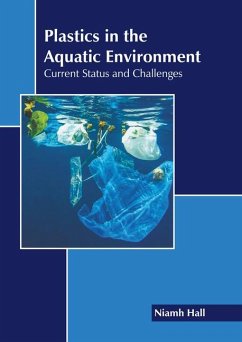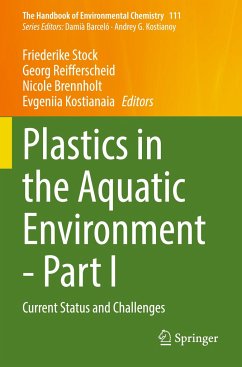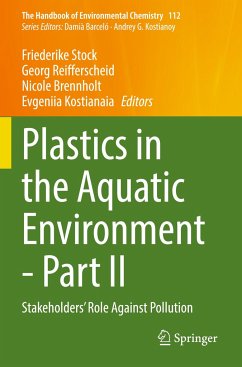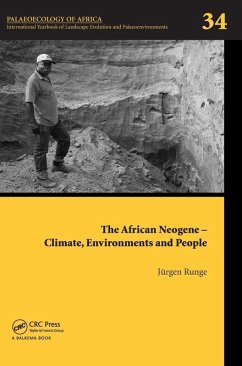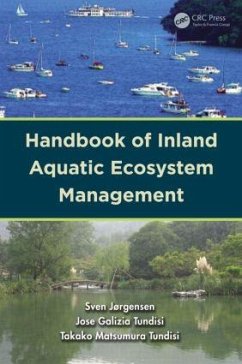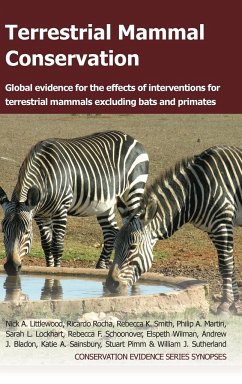Gebundenes Buch
Particulate Plastics in Terrestrial and Aquatic Environments
Versandkostenfrei!
Versandfertig in 1-2 Wochen
Weitere Ausgaben:

PAYBACK Punkte
121 °P sammeln!




Particulate Plastics in Terrestrial and Aquatic Environments provides a fundamental understanding of the sources of these plastics and the threats they pose to the environment. It demonstrates the ecotoxicity of particulate plastics using case studies and offers management practices to mitigate environmental contamination.
Nanthi S. Bolan, PhD, is Professor of Environmental Science at the University of Newcastle, Callaghan, New South Wales, Australia. Dr. Bolan is a Fellow of American Soil Science Society, American Society of Agronomy, and New Zealand Soil Science Society, and was awarded the Communicator of the Year award by the New Zealand Institute of Agricultural Sciences. He has published more than 400 book chapters and journal papers, and was awarded the M.L. Leamy Award by NZ Soil Science Society in recognition of the most meritorious contribution to soil science. He has served as the Associate Editor of Critical Reviews in Environmental Science and Technology and Technical Editor of the Journal of Environmental Quality. Dr. Bolan is one of the Web of Science Globally Highly Cited Researchers for 2018 and 2019. M.B. Kirkham, PhD, is University Distinguished Professor in the Department of Agronomy at Kansas State University (Manhattan). Dr. Kirkham has written three textbooks dealing with soil-plant-water relations and is the author or coauthor of more than 300 contributions to scientific publications and is on the editorial boards of 16 journals. Dr. Kirkham is a Fellow of the American Society of Agronomy, the Crop Science Society of America, the Soil Science Society of America, and the American Association for the Advancement of Science, and has been elected honorary member of the International Union of Soil Sciences; and has received several awards, including, most recently, the International Soil Science Award from the Soil Science Society of America. Claudia Halsband, PhD, is a marine ecologist and Senior Scientist at Akvaplan-niva, a private research institute in Tromsø (Norway), where she leads the Ecosystem Understanding section with a focus on arctic environmental issues. Dr. Halsband has published >40 papers and is a former EU Marie-Curie postdoctoral fellow. She is a member of ARCTOS (ARCTic marine ecOSystem research network), the World Association of Copepodologists (WAC), and a former founding member of APECS (the Association of Polar Early Career Scientists). Dayanthi Nugegoda, PhD, is Professor of Ecotoxicology at RMIT University and a lead researcher in the Aquatic Environmental Stress (AQUEST) Research Group. Her group has developed novel methods to assess monitor and evaluate the effect of toxicants and environmental stressors on aquatic organisms, and ecosystems. She has published >160 peer reviewed journal articles, 3 books, 5 book chapters, and >30 reports to industry. In 2014, she was awarded a visiting Professorship at Tianjin, Chengxian University, China; In 2009, she served as a Visiting Professorship at the Helmholtz Research Centre for Environment and Health, Munich, Germany; and a Visiting Research Fellowship at the Flinders University Research Centre for Coastal and Catchment Environments. In 2019, she was awarded the RMIT Vice-Chancellors Award for Research Impact. Yong Sik Ok, PhD, is a Full Professor and Global Research Director of Korea University in Seoul, Korea. Together with graduate students and colleagues, Dr. Ok has published over 700 research papers, 60 of which have been ranked as Web of Science ESI top papers (56 nominated as "highly cited papers" [HCPs] and 4 nominated as "hot papers"). He has been a Web of Science Highly Cited Researcher (HCR) since 2018. In 2019, he became the first Korean to be selected as an HCR in the field of Environment and Ecology. He maintains a worldwide professional network through his service as an Editor (former Co-Editor in Chief) of the Journal of Hazardous Materials, Co-Editor for Critical Reviews in Environmental Science and Technology, Associate Editor for Environmental Pollution and Bioresource Technology, and as a member of the editorial boards of Renewable and Sustainable Energy Reviews, Chemical Engineering Journal, Chemosphere, and Journal of Analytical and Applied Pyrolysis, along with several other top journals. He has served in a number of positions worldwide including as Honorary Professor at the University of Queensland (Australia), Visiting Professor at Tsinghua University (China), Adjunct Professor at the University of Wuppertal (Germany), and Guest Professor at Ghent University (Belgium). He currently serves as Director of the Sustainable Waste Management Program for the Association of Pacific Rim Universities (APRU). He has served as chairman of numerous major conferences such as Engineering Sustainable Development, organized by the APRU and the Institute for Sustainability of the American Institute of Chemical Engineers (AIChE).
Produktdetails
- Verlag: CRC Press
- Seitenzahl: 466
- Erscheinungstermin: 17. Juli 2020
- Englisch
- Abmessung: 260mm x 183mm x 29mm
- Gewicht: 1064g
- ISBN-13: 9781138543928
- ISBN-10: 1138543926
- Artikelnr.: 69945892
Herstellerkennzeichnung
Libri GmbH
Europaallee 1
36244 Bad Hersfeld
gpsr@libri.de
Für dieses Produkt wurde noch keine Bewertung abgegeben. Wir würden uns sehr freuen, wenn du die erste Bewertung schreibst!
Eine Bewertung schreiben
Eine Bewertung schreiben
Andere Kunden interessierten sich für



